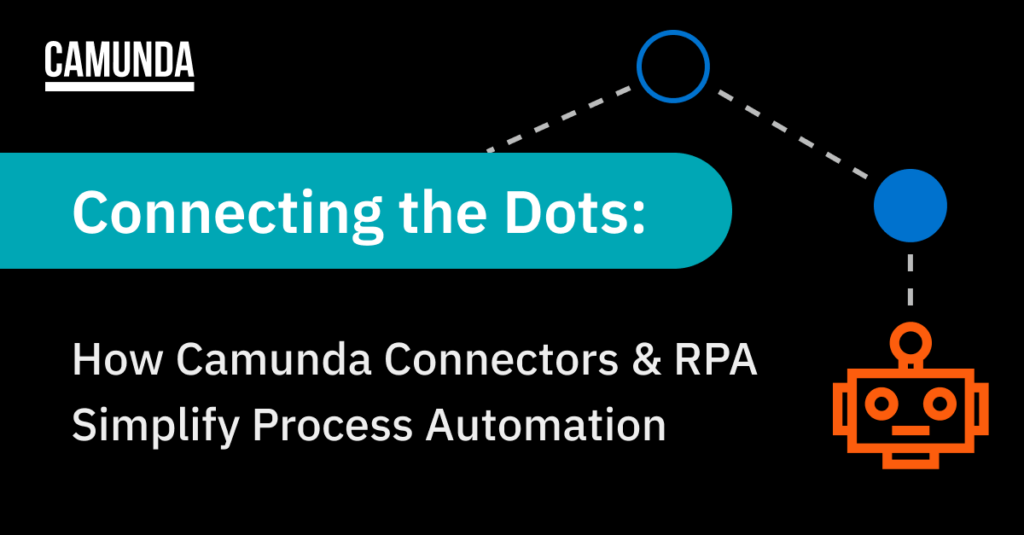For decades, businesses of all types have been trying to do more with less. Either by the desire to augment profits, or by the need to reduce operating costs, organizations have sought ways to automate their business processes with software. The faster the software is produced, all other things being equal, the greater the benefit for the business.
In order to achieve this, software developers came up with the idea of software frameworks with the aim of allowing engineers and designers to devote their time to meeting business requirements rather than in writing low-level scaffolding code. This thinking gave us frameworks such as Bootstrap, Laravel, or Spring to mention a few. Take Spring for example, their vision is to “make Java programming quicker, easier and safer”. They simplified the Java programming experience.
Process engines came to be as an effort to simplify business processes automation. The use of a process orchestration solution, like Camunda, simplified complex programming tasks like retrying, waiting, timeouts, failure handling, state handling, human task management and distributed transactions. Not only the programming tasks benefit from this approach, but business analysts now have a simpler and faster way to express business requirements effectively fostering business and IT collaboration.
More recently, RPA tools appeared in order to simplify human tasks, an aspect of process automation. They make “easy to build […] software robots that emulate human actions interacting with digital systems”. What used to be a swivel chair task, now is an automated task, streamlining the process execution when combined with a process orchestration solution.
At BP3, a certified Camunda Partner, I once was assigned to a project that struggled to keep up with monthly changes to product rates and at the same time offer better rates to their loyal customers than their competition. They had at least two FTEs just to keep the system of records up to date. Also, they had no sight of who and how new rates were approved. We proposed a solution consisting of Camunda and Automation Anywhere. The development manager, even though he understood the value proposition, was completely against the idea of using RPA bots because that would build technical debt. We implemented the solution in about four weeks. The business users were ecstatic with the results.
Technical debt, understood as a “consequence of software development decisions that result in prioritizing speed”, is a hot topic when discussing RPA in the process automation context. Can RPA deliver what you need into production sooner? Yes! Is it sub-optimal design? It depends on how well you are using the right tool for the right job. Our customer above achieved a faster time to value using RPA. The “optimal no-technical-debt design” would’ve taken months. While there might be some debt in this approach, the business gains are clear, and they can be used to fund new projects to repay existing debt.
The Camunda Connectors & Integration Framework follows the same path of simplification by the means of configuration and reuse. Connectors aim to reduce “the time it takes to automate and orchestrate business processes”. With an ever-growing out-of-the-box Connectors list, Camunda not only simplifies process automation, but accelerates solution implementation by leveraging these reusable building blocks.
A company in the real estate management industry had the need to map out their business processes and implement several approval workflows that require forms, documents and notifications. We mapped and built the process with Camunda SaaS leveraging several out-of-the-box Connectors like Slack, SendGrid and Google Drive in three weeks. A “traditional” solution would have definitely taken longer to build even with the use of frameworks. This simplified approach to process automation yielded lower time to value and efficiency improvements in their day to day operations.
Some might argue that all this simplification is a low-code approach, as if it was an evil thing. Usually, the main reason to judge it as such is the fact that the implementation and delivery of a solution is now within reach of less technical personas. However, this in itself is not a bad thing. Now a broader group of people have the chance to participate in automating business processes which narrows the LOB-IT gap by bringing perspective to the issue at hand. With that said, it’s important to mention that some discipline and controls are warranted like in any organization.
Software development is all about simplification. In striving for simplification, fascinating technical problems arise which is the sweet spot for many developers out there. A bot or a Connector, while technically low-code solutions, removes tedious work from the already long to-do list, allows technical focus on the big picture and tough problems, and gives businesses faster ways to achieve their goals.
Many organizations pride themselves on their technical excellence, and often disregard the benefits of process automation when it comes in the shape of a less technical coding environment, be it a process diagram, a configurable building block or a bot. However they’re most likely using frameworks like Spring, Hibernate or React to speed up the delivery of their solutions. While these benefit the engineer, process automation with Camunda, Connectors, and RPA benefits the whole business. The solution space is more accessible, and more visible to everyone. To simplify does not mean to be simplistic, it’s rather “a faster way to do that”.
Learn more
Curious to find out more about how you can orchestrate your RPA bots effectively, or how BP3 can help? Check out the links below to learn more.


Start the discussion at forum.camunda.io